I recently finished playing through Killbrite Studio’s Among the Sleep (2014), and after falling through a wormhole of online reviews, blog posts, and comment sections regarding people’s reviews and interpretations of the game, I have been thinking quite a lot about the representation of children, children-heroes, and children-victims in video games. Indeed, I have noticed that there seem to be certain patterns in the manner in which children are represented, and these patterns, ultimately, seem to be predicated on the basis of gender. Significantly, it would also seem that we tend to assign gender (and the coinciding gender roles) to child-characters even if (and perhaps especially if) this gender is never explicitly stated. As such, I wonder—why is it that we gender children in certain ways and according to certain categorized roles? What is it about children that causes us to do so? And what is it about playing games through them that makes us seek such gendered meaning?
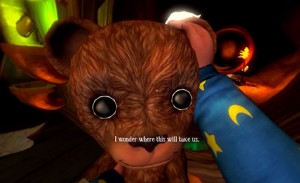 My line of questioning, as I said, has been sparked by the various ways that I have seen people discuss Among the Sleep online. As I perused reviews and articles after finishing the game, I came to realize that all the pieces I read, if they referred to the child using third-person and not second-person pronouns, referred to the child as “he” or “him.” To back up a bit (and for those readers unfamiliar with the plot of the game), Among the Sleep is a first-person survival horror game in which we play a toddler searching for his or her missing mother. The child’s name is never stated at any point in the game; nor is the child’s gender. And yet, to return to my observation at the beginning of this paragraph, many people, in making use of the masculine third-person pronoun, have assumed the child’s gender is male.
My line of questioning, as I said, has been sparked by the various ways that I have seen people discuss Among the Sleep online. As I perused reviews and articles after finishing the game, I came to realize that all the pieces I read, if they referred to the child using third-person and not second-person pronouns, referred to the child as “he” or “him.” To back up a bit (and for those readers unfamiliar with the plot of the game), Among the Sleep is a first-person survival horror game in which we play a toddler searching for his or her missing mother. The child’s name is never stated at any point in the game; nor is the child’s gender. And yet, to return to my observation at the beginning of this paragraph, many people, in making use of the masculine third-person pronoun, have assumed the child’s gender is male.
This assumption, it seems to me, is most likely based on the fact that the child wears a blue onesie with yellow stars for the duration of the game. To be sure, the idea of colors as signifiers of gender is fairly well documented, and one need only walk down the aisles of the toy section of a store to realize that those toys designated as appropriate for girls are blanketed in pink while those for boys are packaged in shades of blue. And while it may seem that blue-for-boys and pink-for-girls has always been the case, these designations, in fact, used to be flipped. In other words, prior to the early 1900s, our gendered designations for the colors pink and blue were the opposite—pink was for boys and blue was for girls. (This is actually something that Anne Fausto-Sterling explains in her book Sex/Gender: Biology in a Social World (2012), which I recommend reading for a more in-depth discussion of the history of pink and blue—among other things—than I’ll be going into here.) What this brings attention to is the fact that the ways we gender color are actually not immutable, and this immutability might show us that the gendered significations of blue and pink are not simply set in stone but are, rather, culturally constructed. So, even though the meanings we’ve assigned to pink and blue might seem obvious, might seem unchangeable, they actually are changeable and have, in fact, been changed before. Pink and blue, therefore, are an example of what Fausto-Sterling calls “socially produced gender coding.”
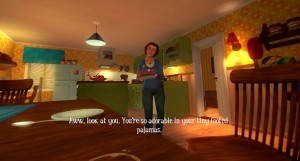 So, it would seem that this feminine and masculine color-coding is the context in which the blue onesie from Among the Sleep is situated. Blue is only for boys, therefore blue onesies are worn only by boys, therefore the child in the game has to be a boy. End of story, it would seem. But, as someone (a lady someone, by the way) whose favorite color as a child was blue, I have to say that I have some problems with this. And I also have to say that I don’t think this is in fact the end of the story—because this still doesn’t seem to explain why we gender child-characters in this way and according to such gender coding. Why do we need the child in Among the Sleep to be a boy? What is it about the game itself that makes those of us who play it seek meaning in the blue onesie? (Not to worry—no risk of spoilers for the game here; rest assured you can read on, spoiler-free.)
So, it would seem that this feminine and masculine color-coding is the context in which the blue onesie from Among the Sleep is situated. Blue is only for boys, therefore blue onesies are worn only by boys, therefore the child in the game has to be a boy. End of story, it would seem. But, as someone (a lady someone, by the way) whose favorite color as a child was blue, I have to say that I have some problems with this. And I also have to say that I don’t think this is in fact the end of the story—because this still doesn’t seem to explain why we gender child-characters in this way and according to such gender coding. Why do we need the child in Among the Sleep to be a boy? What is it about the game itself that makes those of us who play it seek meaning in the blue onesie? (Not to worry—no risk of spoilers for the game here; rest assured you can read on, spoiler-free.)
Perhaps it has to do with the way we comprehend trauma. As Among the Sleep progresses and as the child continues to search for his or her mother, we come to realize that this child has endured a great deal of trauma. As such, perhaps it makes it more manageable for us to play through such trauma if we do so through a male character. Perhaps such trauma seems somehow less acceptable to witness or play through if it is done so through a female child. Perhaps by ascribing masculinity to the child, we are somehow able to see the child as more resilient, more invulnerable, more able to bounce back from such trauma than if the child were a girl. Or, as one of the characters in the game says, “A child shouldn’t have to go through this”—but maybe more specifically, a girl-child shouldn’t have to go through this. At least, that seems to be what we’re thinking when we feel the need to play the game through the (assumed) male child. This seems to be what we’re thinking when we refer to the child as “he.”
The problem with such assumptions is that when we assign the values of resilience, strength, and invulnerability to male figures, we can infer the assigning of the converse values to female figures. In other words, if we assume the child is male because of the strength and resilience needed to endure such trauma, then that means that we’re assuming that, if the child were female, she would be too weak, too fragile, too vulnerable to deal with such trauma in any successful way. This would mean, then, that we see girls as helpless victims and boys as resilient heroes, and never the twain shall meet. And such rigidly defined gender coding seems to reveal the perpetuation of the way that patriarchal binaries affect the assumptions we make about the characters we play.
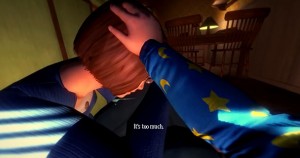 There is a lot to unpack here, and I feel as though I’ve only scratched the surface. I wonder what such conclusions might mean for other games in which child-characters are present. I wonder what such conclusions might mean for the different modes of representation we see in the survival horror genre of which Among the Sleep is a part. And I wonder what such conclusions might mean for the way we play games overall. Ultimately, though, I’ve come to realize that it is important, at the very least, to pay attention to the use of even the smallest two-letter pronoun because even these small moments have the potential to reveal the manner in which we think about children and gender. And blue onesies. And if we don’t pay attention to such things, then we can’t begin to change them.
There is a lot to unpack here, and I feel as though I’ve only scratched the surface. I wonder what such conclusions might mean for other games in which child-characters are present. I wonder what such conclusions might mean for the different modes of representation we see in the survival horror genre of which Among the Sleep is a part. And I wonder what such conclusions might mean for the way we play games overall. Ultimately, though, I’ve come to realize that it is important, at the very least, to pay attention to the use of even the smallest two-letter pronoun because even these small moments have the potential to reveal the manner in which we think about children and gender. And blue onesies. And if we don’t pay attention to such things, then we can’t begin to change them.
Bianca is a graduate student at Purdue University, where she is currently working on her Ph.D. in 20th and 21st century American literature. While Bianca loves thinking about all things gaming, she especially loves playing and talking about survival horror games and the manner in which these games comment on the ways we think about gender. Her preference for being terrified by the games she plays seems to stem from her love of the horror genre in general, which especially includes a passion for zombie narratives (she often refers to the tropes established by George Romero as “canonical”). When not engaged in thinking about any of the above, Bianca can often be found rewatching (for the billionth time) either Buffy the Vampire Slayer (the show, not the movie) or The X-Files (fun fact: Bianca and Fox Mulder have the same birthday!).



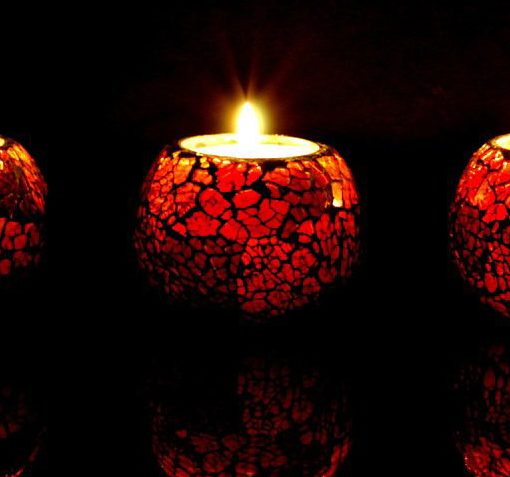
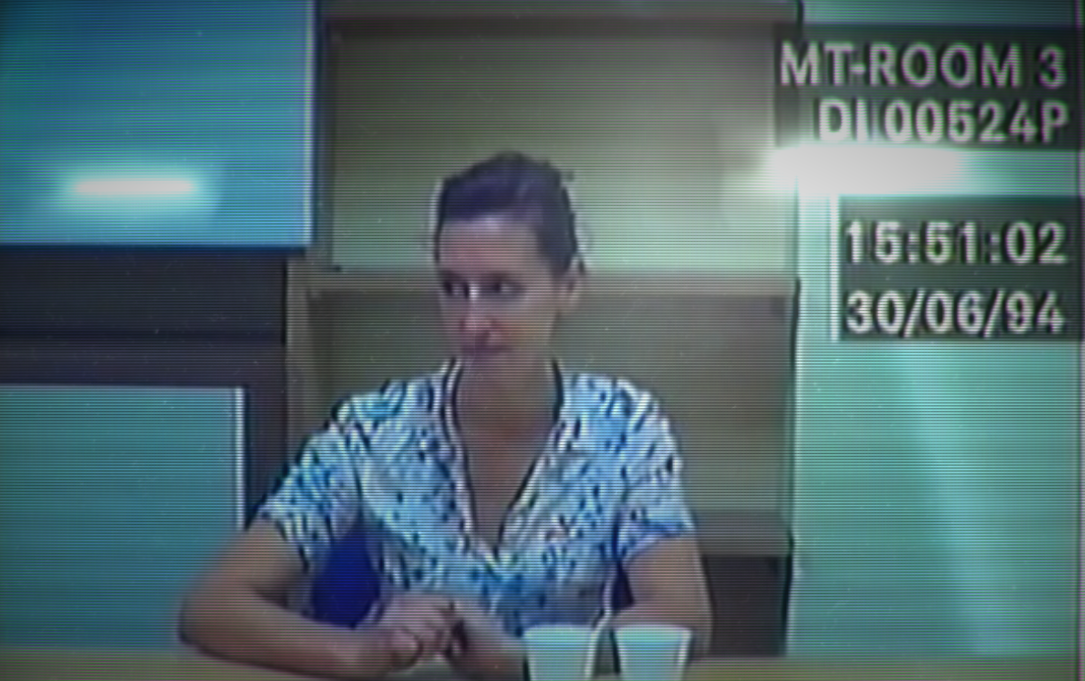
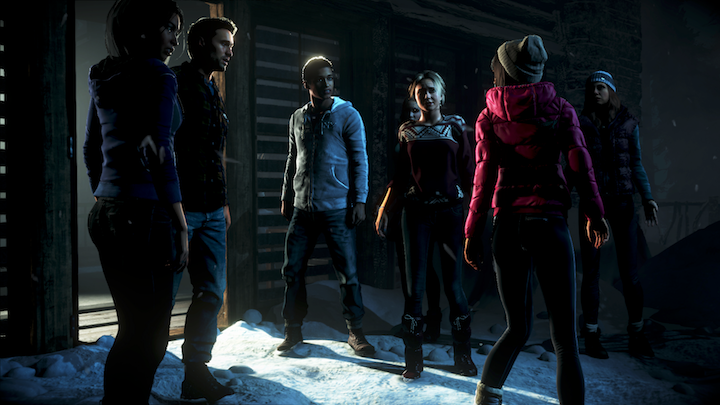
2 thoughts on “The Continuing Case of the Blue Onesie: Baby Clothes and Gendered Color Coding in Among the Sleep”
Good read. The questions you ask are important!
Ms. Batti offers insight into the design of games and how something as seemingly innocent can contain color markers of cognitive bias, ignoring the message in the medium of the game.
The innocent protagonist in his “ad astra” costume of blue pajamas festooned with stars and planets, uses the symbology of color and shape to define the character. Blue is a color associated with thought and intelligence, the stars a symbol of dreams and of a world beyond the self.
One assumes the designers, to correct this oversight will add a female to this storyline, costumed in pink pajamas that are dotted with bunnies. Again the cognitive bias of pink, for pink is a tint of red, the color of passion and sexuality.
Clothing a child of gender in a costume of nascent sexuality gets us back to the problem of how do you design a game that is fun to play, but does not reinforce stereotype, or contain gender bias.
In a world of games filled with female characters who bodies defy gravity, the business needs to truly examine story, design and message if they want to advance past a male adolescent mindset.
Oh, and as for the bunnies, hasenpeffer!